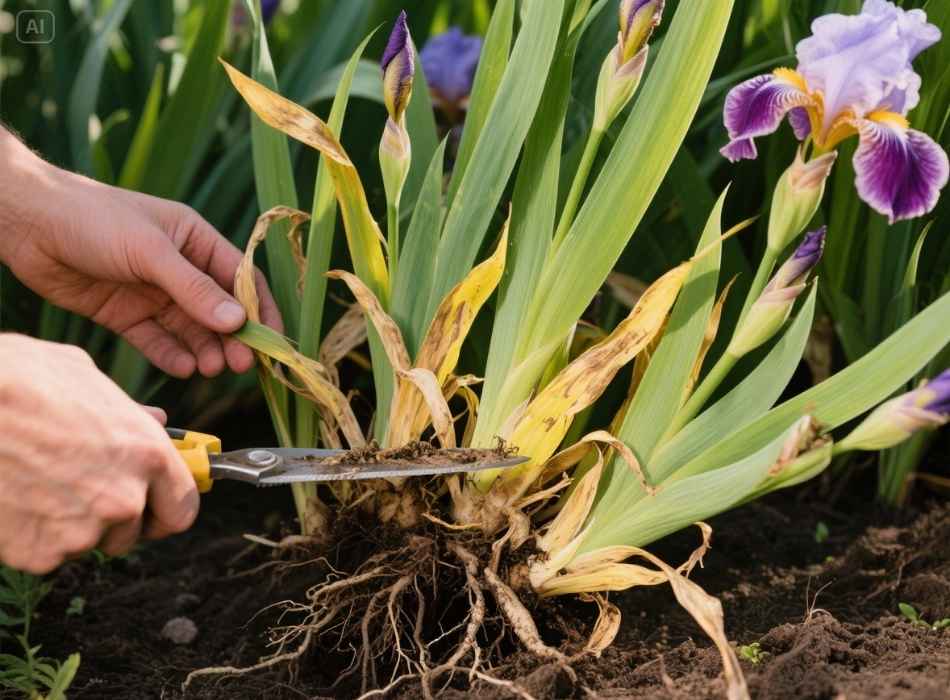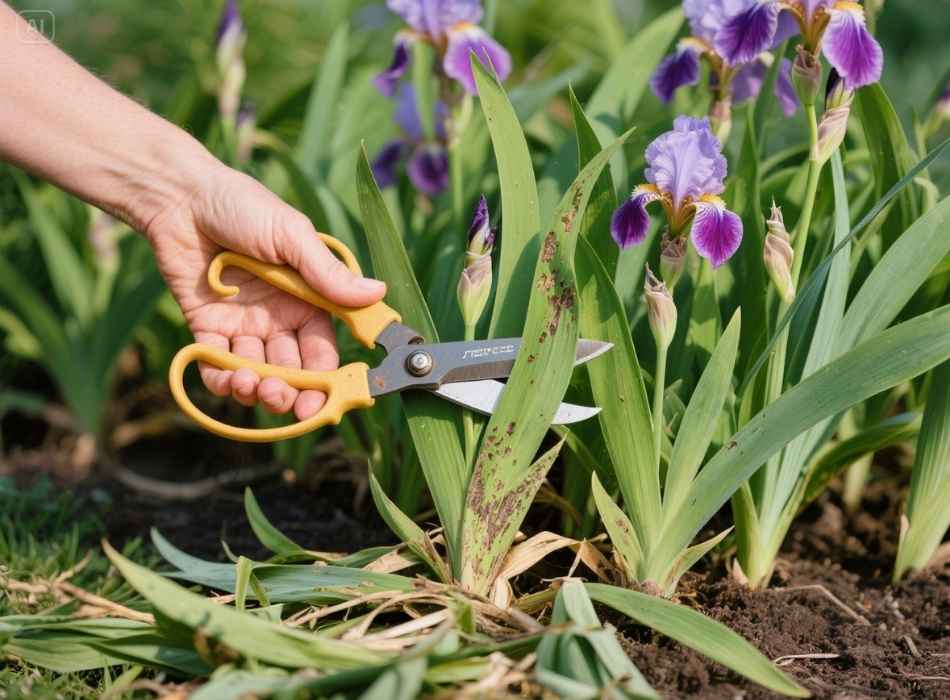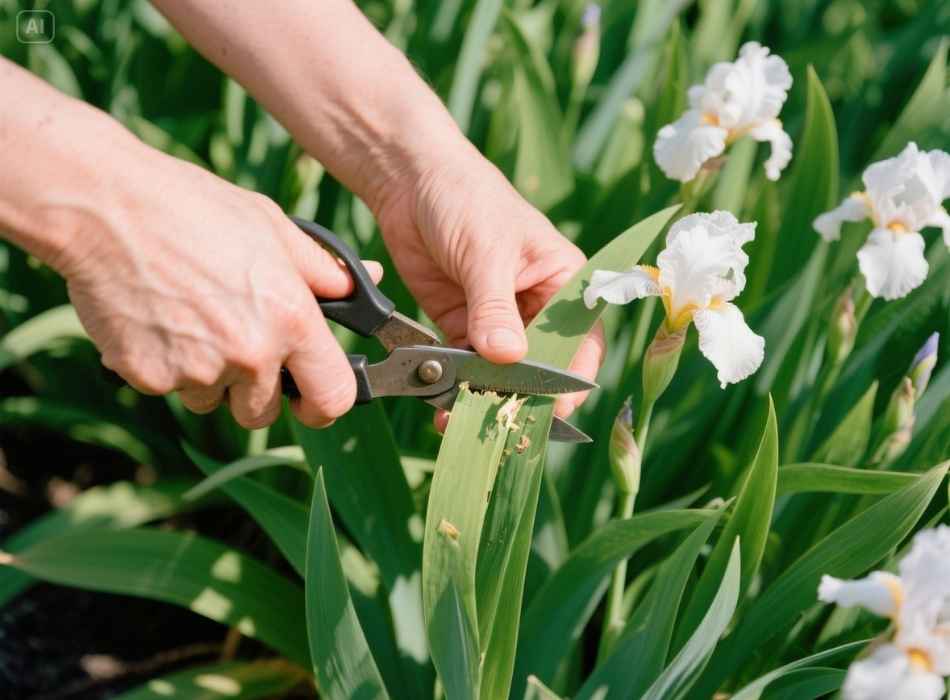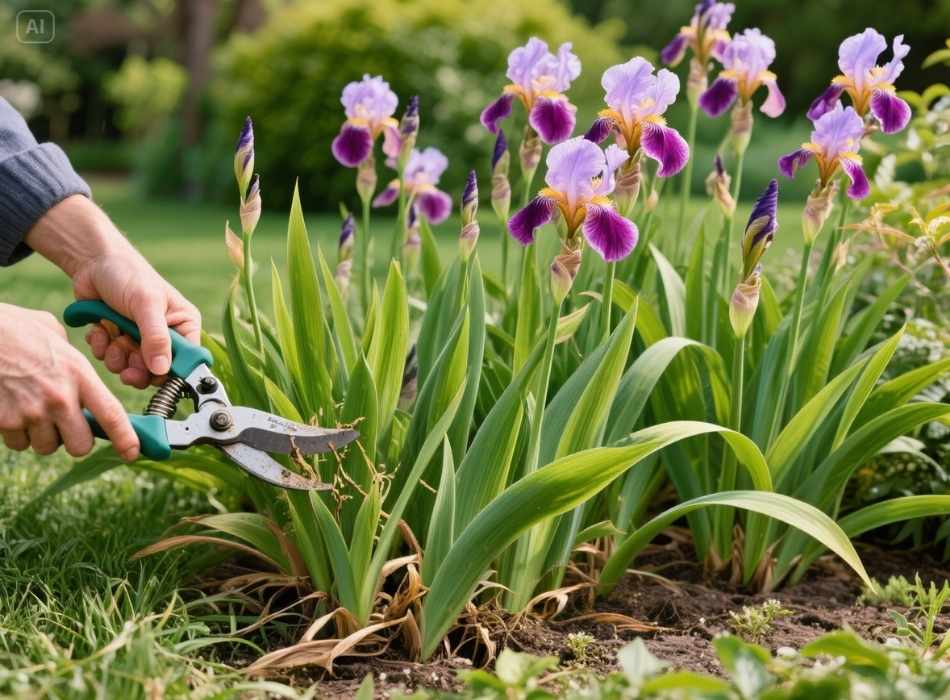Irises are a staple plant for many gardens, characterized by their vibrant blooms and striking foliage. But while their flowers steal the show during the growing season, many gardeners are left wondering what to do with those long, sword-like leaves once the flowers are gone. Should you cut them back or leave them standing? And when’s the right time to grab those shears?
If you’ve been pondering these questions, you’re in the right place. This blog will cover everything you need to know about cutting back iris leaves. We’ll explore the best timing, the how-to of trimming, and even some expert tips for keeping your irises thriving year after year.
Why Should You Cut Back Iris Leaves?
Irises are hardy plants, but maintaining their health doesn’t stop after they bloom. Cutting back the leaves is a necessary step, as it directly affects the plant’s ability to thrive in the coming seasons.
Benefits of Cutting Iris Leaves:

Promotes Healthy Growth
Once the flowering period ends, iris leaves can begin to yellow and wither. Trimming these dying leaves encourages the plant to redirect its energy into root and rhizome development rather than decaying foliage. This helps ensure healthy blooms next year.
Prevents Disease and Pests
Dead and dying leaves can harbor fungal diseases or attract pests like iris borers. By removing them, you’re eliminating these potential breeding grounds.
Enhances Aesthetic Appeal
Faded, droopy iris leaves can make even the most beautiful garden look untidy. Cutting them back tidies up your garden, creating a cleaner, more polished look.
When to Cut Back Iris Leaves

Timing is everything when it comes to cutting back iris leaves. You don’t want to cut too soon and disrupt the plant’s growth cycle, but waiting too long can lead to issues with pests and disease.
After Blooming
Once the flowers fade, don’t trim immediately. Allow the leaves to remain throughout the remainder of the growing season. During this time, the plant uses its foliage to gather energy through photosynthesis, which is stored in the rhizomes for next year’s blooms.
Mid to Late Fall
The best time to cut back iris leaves is in mid to late fall, typically around October or November, depending on your region. By this point, you’ll notice the leaves turning yellow and drying out naturally, signaling that the plant no longer needs them.
How to Cut Back Iris Leaves

Cutting back iris leaves is a straightforward process, but a little technique can go a long way in promoting the health of your plants.
Step-by-Step Instructions
Use the Right Tools
Grab a pair of sharp, clean garden shears or scissors. Dirty tools can transfer diseases, so give them a quick wipe with rubbing alcohol before use.
Trim to the Correct Height
Cut the leaves down to about 4–6 inches above the rhizome. This ensures the plant remains tidy while protecting its base.
Remove Dead or Yellow Leaves First
Begin by trimming any dead or yellowing leaves. Healthy green leaves that haven’t started wilting yet can stay a little longer.
Dispose of Cuttings Immediately
Don’t leave the trimmings near the plants. Iris leaf cuttings can harbor pests and diseases, so collect them and dispose of them properly.
Check for Iris Borers
While trimming, inspect your iris plants for signs of pests like iris borers. Look for any soft, mushy parts in the rhizomes and remove them immediately.
Bonus Tips for Healthy Irises

Dividing Irises
Fall is also the perfect time to divide your irises. Overcrowded rhizomes can decrease flowering, so dig them up every 3–5 years, separate them, and replant the healthiest pieces.
Mulch with Caution
If you live in a colder climate, adding a thin layer of mulch after cutting back the leaves can protect the rhizomes from freezing. However, make sure it’s not too thick, as irises need air circulation to avoid rot.
Fertilize in Spring
While cutting back in the fall is essential, don’t forget to fertilize your irises in the early spring. Choose a low-nitrogen fertilizer to encourage vibrant blooms.
Common Mistakes to Avoid
Even seasoned gardeners can sometimes make missteps when it comes to cutting back iris leaves. Here’s what to watch out for:
- Cutting Too Early
Removing foliage right after blooming can weaken the plant. Always wait until it starts to yellow.
- Leaving Too Much Debris
Failing to clean up after trimming can attract pests and encourage fungal growth.
- Using Dirty Tools
Garden shears or scissors that haven’t been disinfected can spread diseases from one plant to another.
Keeping Your Irises Picture-Perfect
Caring for iris plants doesn’t stop once their stunning blooms fade. By cutting back the leaves at the right time and using proper techniques, you can ensure healthy, vibrant blooms year after year.
If you’re a gardening enthusiast looking for more tips, consider subscribing to our newsletter or checking out our plant care guide for perennials. Give your garden the care it deserves, one cut at a time!











